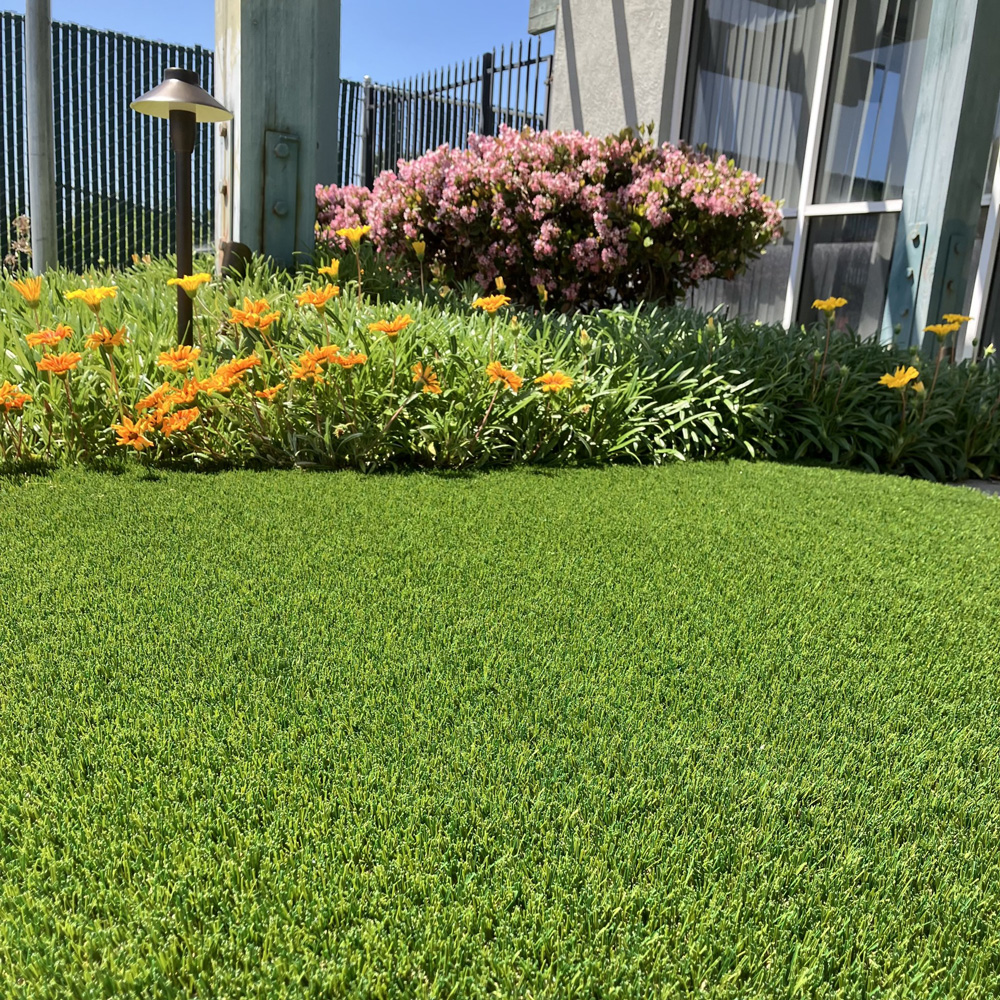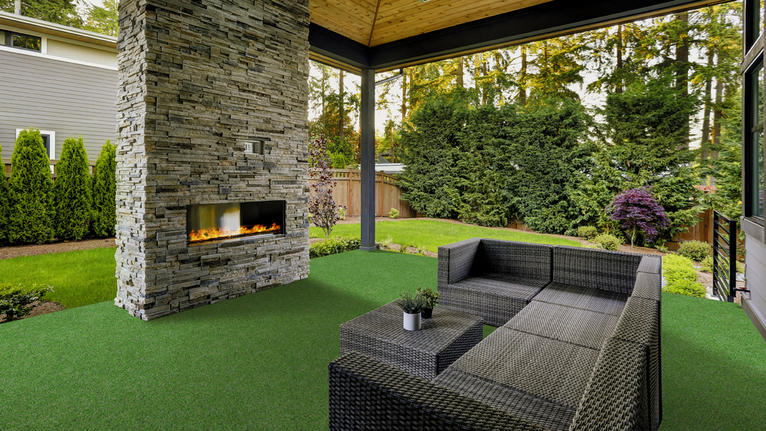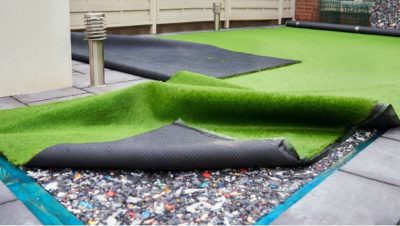Discover the Benefits of Synthetic Grass for Your Outside Area
Synthetic grass offers a compelling option for boosting exterior areas, offering countless advantages that prolong past plain aesthetic appeals. Its low upkeep demands substantially minimize the moment and sources normally spent on conventional landscaping, while its eco-friendly characteristics add to sustainable techniques. In addition, the lasting durability of synthetic grass makes certain that it continues to be an appealing alternative over the years. As we explore these benefits better, one must consider how such a transformation could impact not only the look of your landscape yet additionally your total way of living and building value.
Low Maintenance Requirements
One of one of the most considerable advantages of man-made turf is its low maintenance requirements. Unlike natural lawn, which demands regular mowing, watering, fertilizing, and insect control, synthetic grass needs far much less effort to keep its aesthetic allure and practical stability. Arizona artificial grass. This equates right into considerable time and expense financial savings for homeowner, permitting them to allot sources a lot more successfully
Artificial turf eliminates the demand for traditional grass care practices, which can be both labor-intensive and environmentally exhausting. There are no grass clippings to get rid of or collect of, neither is there a requirement for chemical fertilizers or herbicides that can present a threat to regional environments. The seldom cleaning and periodic rinsing to get rid of particles and dust are normally all that is needed to keep synthetic grass looking beautiful.
Furthermore, synthetic grass is very durable, with the ability to withstand heavy foot traffic without the damage linked with natural grass. Its durability implies that residential or commercial property owners can delight in a rich, eco-friendly landscape year-round, no matter of climate conditions. On the whole, the low upkeep needs of synthetic grass make it an appealing choice for those looking for a lovely, convenient outside area.
Environmental Benefits
The ecological advantages of man-made lawn are significant, adding to even more lasting landscaping techniques. In contrast, fabricated turf eliminates the requirement for watering, conserving thousands of gallons of water each year.
Furthermore, fabricated turf lowers the reliance on chemical fertilizers and pesticides. These chemicals can leach into soil and waterways, creating environmental injury. By opting for synthetic yard, services and property owners can lessen their environmental influence and advertise healthier ecological communities.
Synthetic lawn additionally mitigates soil erosion. Natural yard can become compressed and used over time, leading to enhanced overflow and loss of topsoil. The stable surface of man-made grass helps keep dirt honesty, making it a safer choice for sloped locations.
Furthermore, the longevity of synthetic grass indicates less regular substitutes, reducing waste in garbage dumps. As it generally lasts for 15 to 25 years with correct care, the material's resilience equates right into reduced resource intake in time. In recap, artificial lawn provides a compelling option for environmentally conscious landscape design.
Cost-Effectiveness
While the initial financial investment in synthetic grass might appear substantial, its lasting cost-effectiveness ends up being noticeable when considering upkeep savings and sturdiness. Typical lawns need ongoing costs such as mowing, watering, feeding, and bug control, which can build up significantly with time. On the other hand, synthetic lawn gets rid of or significantly minimizes these costs, supplying an extra economical option in the long run.
Synthetic grass calls for marginal upkeep-- normally just occasional cleaning and rinsing-- enabling homeowners to minimize labor and resources. This reduction in maintenance not just reduces expenses however likewise conserves water, making it an environmentally pleasant option. The longevity of fabricated grass contributes to read more its cost-effectiveness; top quality products can last for over a decade without needing substitute.
In addition, synthetic grass can boost property worth by enhancing visual allure and providing an excellent exterior space year-round. Mesa artificial turf. House owners can likewise appreciate the versatility of man-made lawn for various tasks, which can minimize the requirement for extra landscaping investments. Generally, when considered versus the continuous costs related to all-natural grass, fabricated turf becomes a monetarily wise service that supplies enduring value

Durability and Longevity
Man-made turf is renowned for its phenomenal sturdiness and long life, commonly enduring upwards of 15 years with proper installation and treatment. This durability is largely associated to the top notch products utilized in its production, including UV-resistant fibers that hold up against extended direct exposure to sunshine without fading or derogatory. Unlike natural turf, synthetic grass is impervious to bugs, diseases, and extreme weather, making it a trusted selection for various environments.

Property owners can take pleasure in a vibrant outdoor area year-round, lowering the trouble of upkeep connected with typical yards. Additionally, the long lifespan of fabricated grass adds to its cost-effectiveness, as the initial financial investment settles with time via decreased upkeep expenses and the evasion of re-sodding or reseeding.
Versatile Style Options
Among the standout attributes of fabricated grass is its functional layout options, which enable businesses and house owners to personalize their outdoor rooms to suit particular visual and functional needs. Unlike natural yard, artificial discover this info here turf can be found in a range of shades, textures, and pile elevations, making it possible for a customized method to landscaping. This versatility makes it possible to develop distinct atmospheres, whether for household yards, commercial homes, or recreational facilities.
Synthetic grass can be flawlessly integrated right into numerous layout plans, from contemporary minimal setups to rich, vibrant landscapes. It can likewise be easily reduced and shaped to fit any area, he has a good point fitting curves, paths, and complex patterns. Additionally, synthetic grass is an optimal solution for multi-functional locations, such as playgrounds, sporting activities fields, and roof gardens, where durability and usability are paramount.
With the ability to integrate different lawn styles or layer it with other materials, such as crushed rock or wood, developers can attain a visually appealing and functional outdoor setting. Artificial turf companies. This flexibility not only boosts the visual value yet additionally increases the overall usability of the space, making fabricated lawn a clever option for diverse applications
Conclusion
In summary, artificial turf supplies many advantages for outdoor areas, consisting of low upkeep requirements, environmental benefits, cost-effectiveness, resilience, and functional design options. By minimizing water usage and eliminating unsafe chemicals, synthetic lawn adds to sustainability while boosting property value.

In addition, synthetic lawn can raise building value by boosting aesthetic allure and supplying a beautiful outside area year-round.One of the standout features of fabricated grass is its flexible style choices, which permit house owners and organizations to customize their exterior spaces to match specific visual and practical demands.In summary, artificial grass provides many advantages for outdoor rooms, including low maintenance requirements, environmental advantages, cost-effectiveness, resilience, and functional design alternatives.